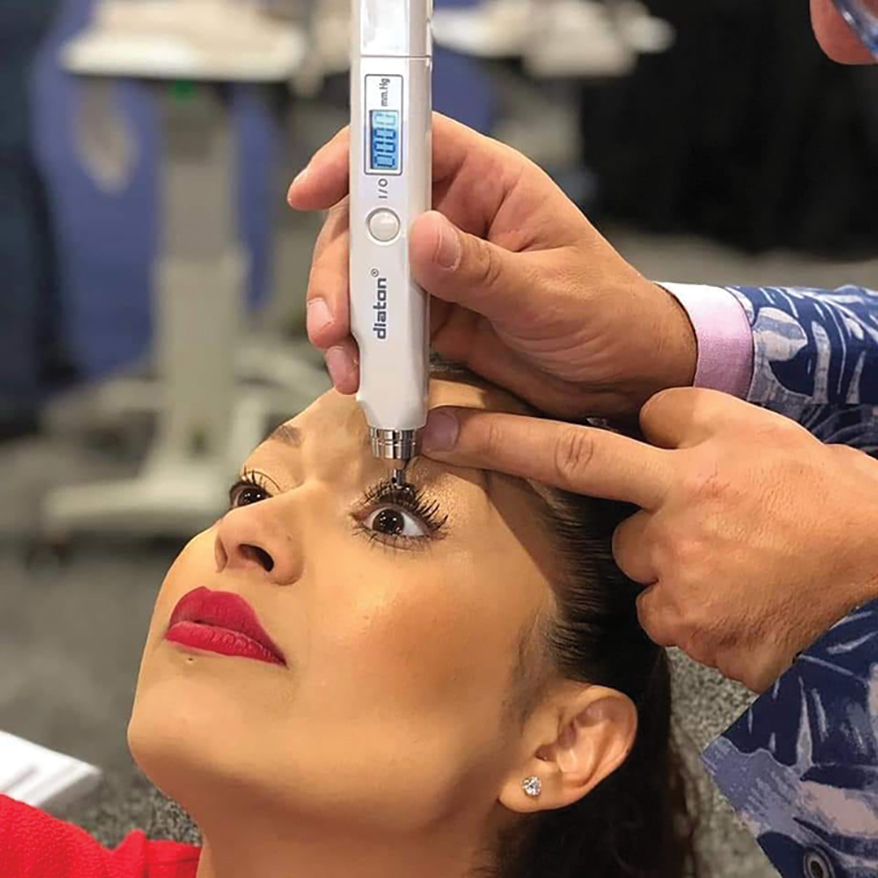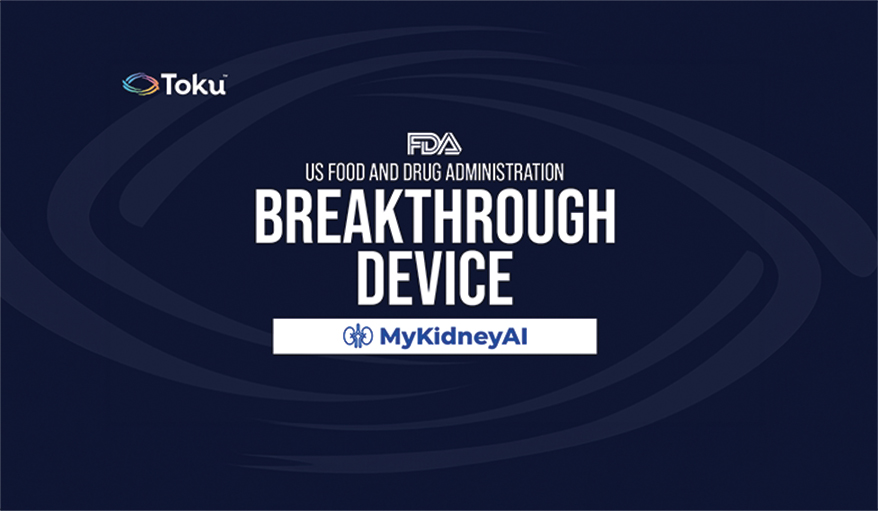UNTIL NOW, ARTIFICIAL Intelligence (AI) has been used primarily in ophthalmology to screen for diabetes. Diabetic retinopathy (DR) is among the leading causes of vision loss in the U.S., yet an estimated 50% of patients with diabetes do not receive recommended annual screening eye exams. Now with more advanced diagnostic tools, there’s a broad spectrum of AI-based health patterns that can be captured through the eye, ranging from minor conditions like poor focus, lack of sleep, and vitamin deficiencies, to signs of more serious diseases like glaucoma, diabetes, or even Alzheimer’s. Three years ago, CPT added a retinal imaging code — 92229 — to detect or monitor disease with point-of-care automated analysis, and the reimbursement for an AI read of an image is higher than a physician read!

DEVELOPALL
The Diaton transpalpebral scleral tonometer, powered by an AI-trained algorithm, can provide precise IOP measurements without the influence of corneal thickness or corneal biomechanics.
(877) 342-8667 | tonometerdiaton.com

PLENOPTIKA
QuickSee Free/Free Pro uses advanced algorithmic analysis on live wavefront aberrometry data to achieve accurate autorefraction with a handheld wavefront autorefractor.
(617) 863-2377 | plenoptika.com

TOKU
The FDA has granted Breakthrough Device designation to Toku’s MyKidneyAI technology, which uses AI to analyze retinal images collected at routine eye exams to detect elevated chronic kidney disease risk in people with diabetes.
tokueyes.com

DIGITAL DIAGNOSTICS
Digital Diagnostics was the first company to receive FDA clearance for an AI diagnostic platform that uses automated image analysis. The platform, LumineticsCore (formerly IDx-DR), autonomously diagnoses DR (including macular edema) at the point-of-care.
(319) 248-5620 | digitaldiagnostics.com
Advertisement

EYENUK
EyeArt AI Eye Screening is FDA cleared AI technology for autonomous detection of vision-threatening DR and can be used with multiple camera models from different manufacturers. Since 2020, the EyeArt AI system has been used by providers on all five continents to screen over 300,000 patients for AMD and glaucomatous optic nerve damage.
(818) 835-3585 | eyenuk.com

ZEISS MEDITEC
The Humphrey Field Analyzer 3 (HFA3) eye monitor and ZEISS FORUM Glaucoma Workplace use AI to deliver interactive progression analysis of glaucoma in patients.
zeiss.com/med
Smart Ways to Utilize AI Diagnostic Tools
Eric Hansen, MD Pacific Northwest Retina
Bellevue, WA

Ophthalmology has been at the forefront of AI especially for diabetic screening using autonomous AI diagnostics. It has evolved most rapidly in detecting vision threatening DR and more than mild DR. I’ve used both of Eyenuk’s programs: EyeArt for DR screening and EyeScreen. EyeArt uses autonomous AI to read fundus images to make a read that is independent of a physician. The report comes directly from the AI program. Data about this type of DR screening shows superior results to an in-office screening by a physician. With this scientific data, people are becoming more receptive to AI. Its key advantage is to have point-of-care screening so patients can see their fundus image and get an immediate diagnosis in real-time. If they have a vision threatening disease, then this will prompt a more urgent referral for follow-up. AI really shines by improving outcomes, giving early detection, and providing better follow-up.
Gary Chu, OD
MPH New England College of Optometry
Boston, MA

I believe technology and AI are important to eyecare. I view it from a perspective of health access, equity, and workforce issues, and how we can learn to create efficiencies. There is a growing demand for eyecare, and we need to leverage technology like AI so we can be more efficient in our daily tasks, direct better diagnoses, and provide more in-person care. Right now, ECPs spend a tremendous amount of time staring at a computer screen to type information into EHRs, but if we use technologies like AI scribing, we could dictate our findings to the EHR and it would direct our findings to the proper locations of the chart. This will allow us to spend more time with our patients.